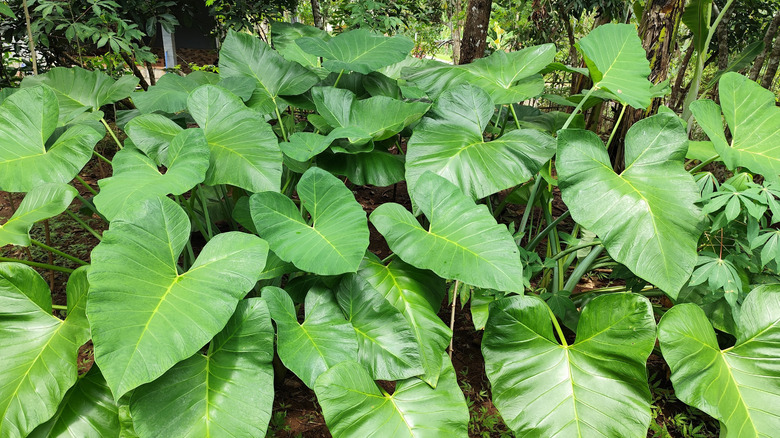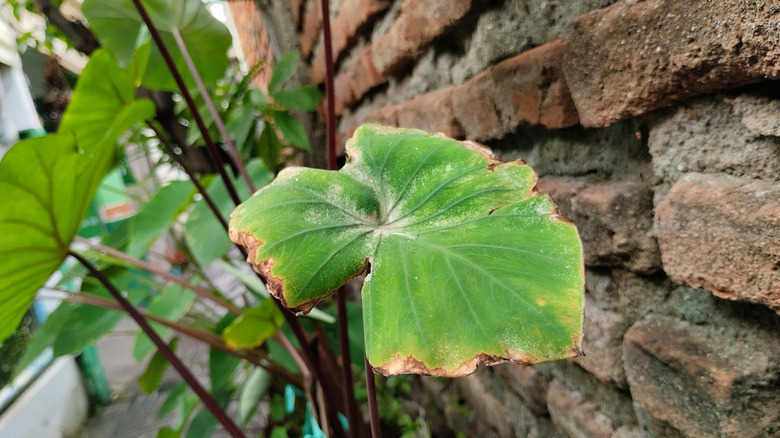How To Spot And Treat A Common Elephant Ear Plant Disease
We may receive a commission on purchases made from links.
Elephant ear plants (Colocasia spp.) are known for their big, heart-shaped leaves, which can come in many colors and patterns. In USDA hardiness zones 8a through 12b, you can grow elephant ears as perennials in your yard. They also thrive as houseplants as long as they receive medium light and a humidity level of at least 50 percent. Whether you're growing an elephant ear indoors or outdoors, watch out for leaf blight — a disease characterized by dark, round fungal growths that appear on leaves. Sometimes these can look wet, dry, yellow or purple, or even covered in fuzz. These spots might also be surrounded by yellow rings. Regardless, the plant needs to be treated with copper-containing fungicide.
As leaf blight progresses, it can kill entire leaves and infects the rest of the plant. Water can help spread fungal leaf blight, so it's important to address the problem immediately if you notice any signs. Some gardeners will apply copper-based fungicide weekly during the rainy season as a preventative. However, before using fungicide on your plant, make sure it is at least a month old, and get rid of all diseased leaves to keep the fungus from spreading. Then, spray all parts of the plant, including the top and bottom of each leaf, with a product such as Bonide Captain Jack's copper fungicide. When addressing leaf blight, also assess how you're caring for your elephant ear plant. Though this plant likes to stay damp, it's crucial to avoid overwatering, which promotes fungal infections.
Preventing fungal leaf blight in elephant ear plants
In general, preventing fungal leaf blight involves giving your elephant ears just the right amount of water. If you see yellow leaves on your elephant ears, you're probably overwatering them. Before providing more water, touch the soil surrounding their base. If the top couple of inches are moist, hold off. If they're dry, give the plants a drink. Not keen on sticking a finger in the soil? Try a tool such as the XLUX soil moisture meter.
Water elephant ears close to their roots, which can help keep infected water droplets from reaching other parts of the plant. Also provide the plants with a growing space that has adequate air circulation, which can help excess water evaporate quickly. Also, using well-draining soil can help keep water from collecting around your plant's roots. If you're growing elephant ears in pots, check that the bottoms have plenty of drainage holes to let water escape. Beyond optimizing your watering practices, make sure you fertilize your elephant ears regularly – every four weeks or so during the growing season if you're using a liquid nutrient booster – to keep them in top form. The less stress they experience, the more successful they're likely to be if leaf blight or other ailments strike.

